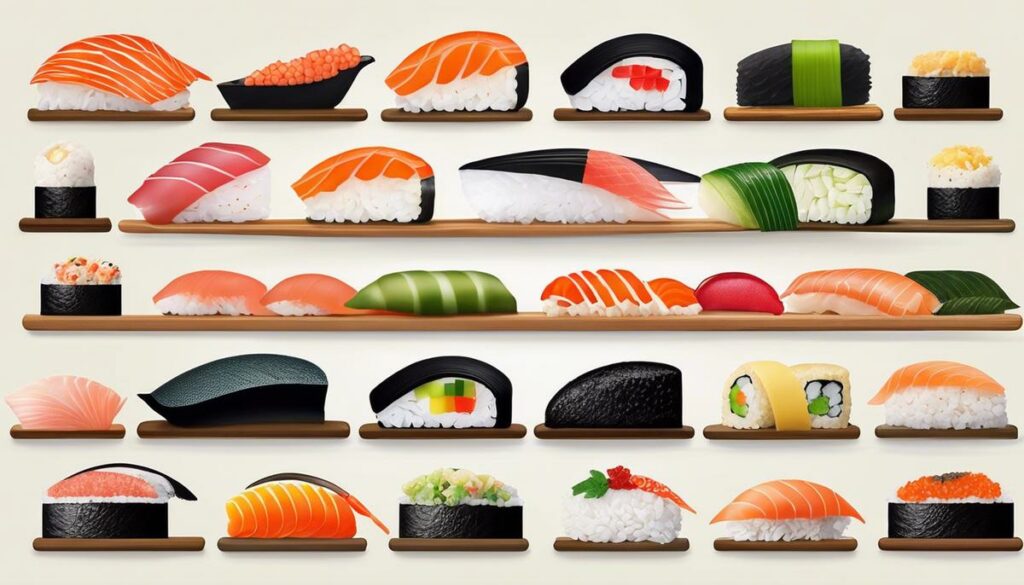It is difficult to imagine the world of gastronomy without the presence of Japanese cuisine and, in particular, sushi. From Tokyo to Toronto, from Berlin to Buenos Aires, sushi has proven its influence and appeal to culinary lovers worldwide. In our quest to understand this phenomenon, we want to explore the history, aesthetics, globalization, and connection with sushi’s social media. Let’s pay a worthy tribute to sushi by exploring the profound influence it has had on Japanese culture and far beyond the country’s borders.
The History of Sushi in Japan
Title: The Evolution of Sushi: A Melody of Rice and Fish
In the midst of the transit hustle and bustle of the Tokyo Metro, century-old food stalls sit next to ultra-modern sushi robots. You could say that the way Japan serves and enjoys its favorite national snack perfectly reflects the character of Japanese society: a harmonious blend of tradition and innovation.
In fact, sushi is much more than just a delicious snack. It tells a story about Japanese culture and how it has evolved over the centuries. Sushi has come a long way from simply preserving fish in fermented rice to modern implementation as an art form and global trend.
The roots of the sushi tradition date back to the 8th century, when fermented rice was first used as a means of preserving fish. The method, which originated in Southeast Asia, quickly spread throughout the country and became a staple of the Japanese diet. However, the fermented rice, which gives the fish its characteristic taste, was initially thrown away.
Over time, this process gradually changed. With the introduction of rice vinegar in the 17th century, the fish was able to ferment faster and the taste of rice gradually became an integral part of the eating experience. This simplification of the process helped make sushi a more commonplace food.
With the urbanization and industrialization of Japan in the 19th century came a change in the way sushi was prepared and consumed. Fast food restaurants or “sushi kiosks” sprang up in the cities, offering city dwellers an easy and quick meal. Today, as it once was, sushi is still one of the most popular fast food dishes in Japan.
In the 20th century, sushi spread beyond Japan to the wide world and has fascinated people around the globe ever since. From New York to Berlin – in no hip metropolis can you find Joe and Jane “Fashion-Forward” without their weekly dose of sushi.
Nowadays, sushi is more than just a dish. It is an art form, a culinary experience, a social event, and a symbol of Japanese culture and aesthetics. From stopping at a street vendor in Tokyo to celebrating a special occasion at an upscale restaurant, sushi fulfills many functions and appeals to all the senses.
So it seems that sushi has the ability to constantly reinvent itself while preserving its essence. Just like Japan itself: a symphony of tradition and modernity that is never afraid to push its creative boundaries. And if it all looks like a thick slice of sashimi and a bowl of steaming rice, then it doesn’t matter, does it?
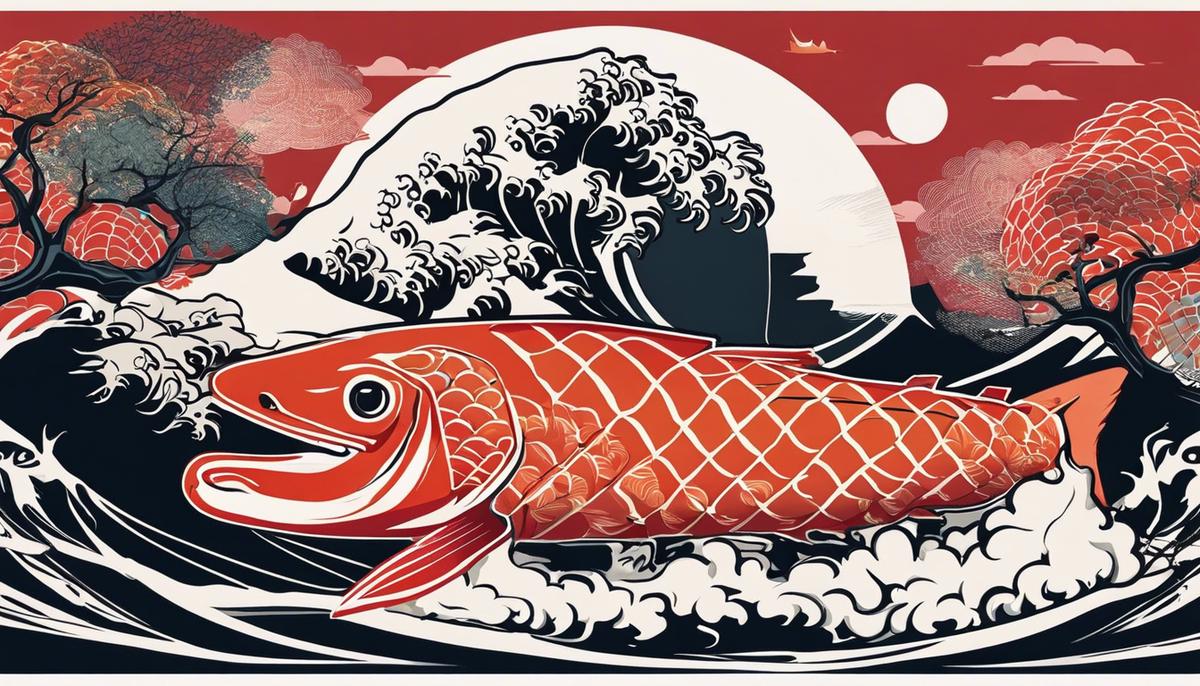
The presentation and aesthetics of sushi
Beauty is in the details: The aesthetics of sushi
If there is one thing that shows us, it is that it can be the smallest and simplest thing that gives us the greatest joy. This secret is at the heart of sushi and shapes the way this food is presented. The sushi aesthetic is an art as unique as the Japanese culture itself that gave birth to it.
The presentation of sushi is a carefully choreographed performance, in which the simple beauty and harmony seem strictly ordered, yet light and natural. Each lovingly hand-rolled sushi roll shows Japanese culture’s deep appreciation for balance and harmony. The slender shapes, the rich color composition, deliberately arranged on the immaculate white plates, are reminiscent of haiku – so expressive in their simplicity.
Every aspect of the sushi presentation reflects Japanese culture’s nuanced appreciation of aesthetics. The art of ikebana, which focuses on balance, is evident in the arrangement of the sushi rolls and complementary garnishes. Japanese minimalism can be found in the preference for clean lines, simple shapes and a limited color palette.
Just like the spiritual practices of Japan, which shape the rituals of tea ceremonial, the aesthetics of sushi are mixed with philosophical considerations. The chopsticks used to consume the sushi are not only a tool, but also symbolize the connection between man and food.
This subtle aesthetic reflects the deeper values of Japanese society: an appreciation for purity and simplicity, an intimate relationship with nature, and a profound awareness of the transience of things. The extremely detailed and meticulous preparation of sushi reflects the intention to make the most of what nature offers us.
In the end, the aesthetics of sushi are the perfect example of how food becomes not just a necessary experience, but an intimate display of the culture and philosophy it generates. By uniting tradition and modernity, sushi challenges us to re-evaluate taste, appearance and experience, engaging all the senses to fully appreciate its true essence. It reveals the incredible care and dedication of Japanese culture to beauty and harmony and invites us to lose ourselves in its tranquility.
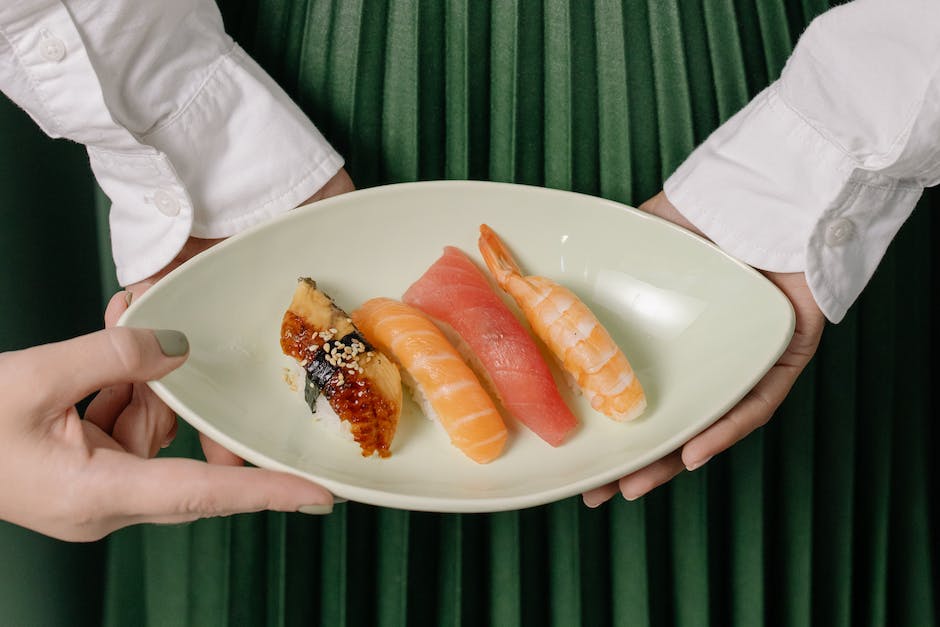
Globalization of Sushi
The Transformation of Sushi: A Culinary Journey Around the World
You may think that sushi is already known all over the world, but it’s interesting to see how this traditional Japanese dish has influenced the eating habits and lifestyle of so many people.
Local ingredients and preferences were taken into account when it was distributed worldwide, resulting in unique interpretations of sushi. In America, for example, a sushi variant was introduced with the California roll, combining avocado with surimi (imitation crab) to compensate for the absence of traditional toro (tuna belly). Another adaptation is the “reverse sushi,” in which the rice is wrapped outside the seaweed to appeal to the Western palate.
Not only the ingredients, but also the presentation has changed. Eye-catching colors and sculptural arrangements have made their way in to impress and delight eaters. There are even sushi artists who create portraits and landscapes with sushi rolls!
Sushi has also managed to pick up on the health-conscious trend. Many enjoy it as a light, nutritious meal rich in high-quality protein, healthy fats, and complex carbohydrates . And for vegans, there are countless creative sushi alternatives, ranging from mushrooms to pickled vegetables.
What does this mean for global food culture? Obviously, new sushi restaurants and bars are booming in cities around the world, and cooking sushi at home is becoming more and more common. Cooking classes that teach the art of sushi-making are incredibly popular, and gourmet versions of the traditional dish can be found in high-end restaurants.
In conclusion, the global spread of sushi has had a profound impact on our eating habits and perceptions of food. It’s a perfect example of how food can build a bridge between cultures and bring people together in a special way. Sushi challenges us to rethink our understanding of aesthetics and taste experience, and to open our senses and minds to new culinary experiences. Every bite of a sushi is an invitation to a journey—and what a delicious journey that is.
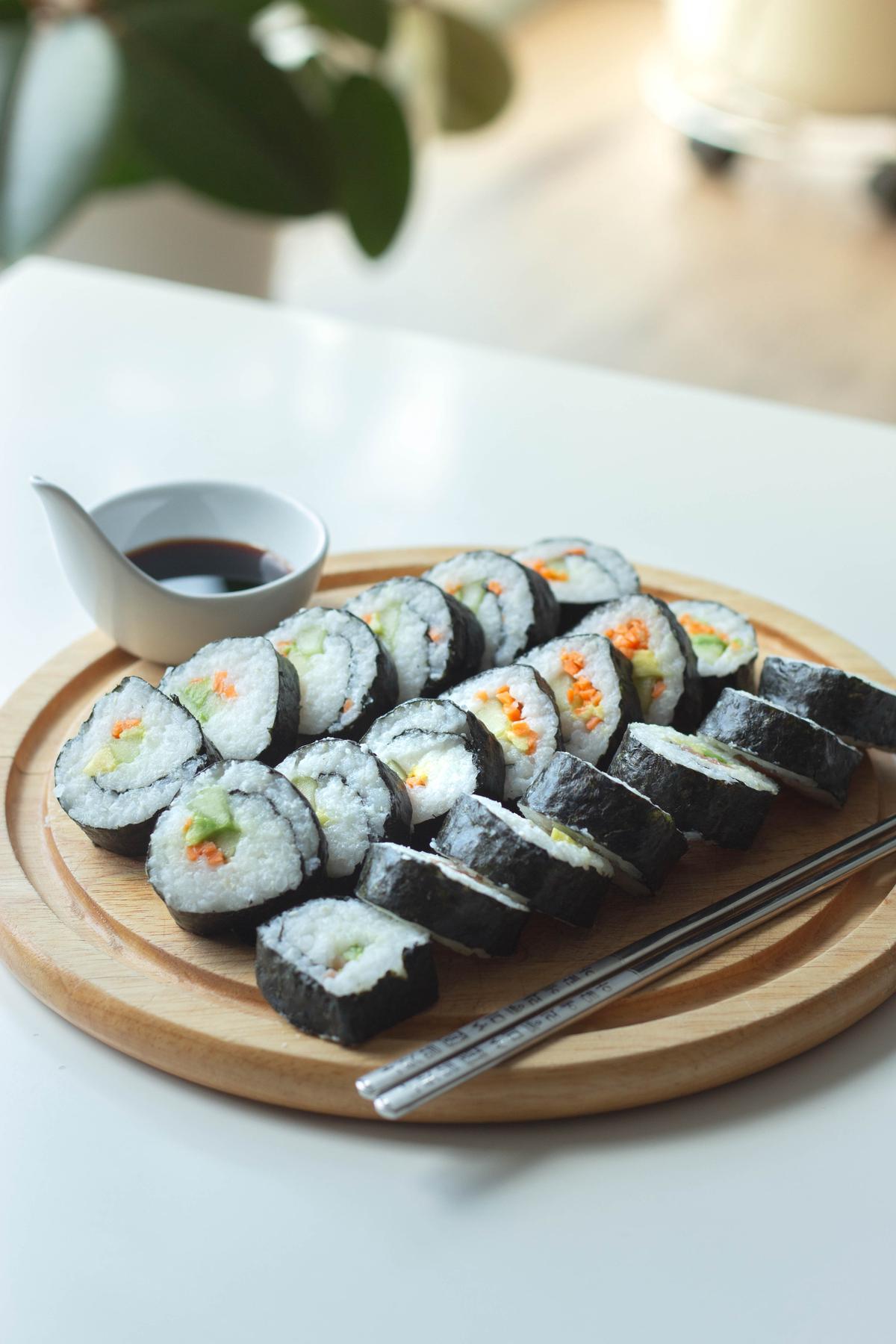
Photo by nicklbaert on Unsplash
Sushi and Social Media
The social media generation has decisively shaped the image of sushi on the world stage. By sharing appetizing pictures and videos of delicious sushi rolls on platforms like Instagram and Facebook, they have conveyed that sushi is more than just a simple dish – it’s a way of life, an art, and a treat for the senses.
Presentation is everything in the food culture of this generation, and sushi fits perfectly into their aesthetic work. Thanks to its diverse colors and shapes, social media influencers have turned eating sushi into a real visual experience. Moreover, the introduction of hashtags such as #sushilover and #sushibar has made sushi a trending object in the eyes of its followers.
The social media generation has also helped further popularize sushi in Western countries by highlighting its health benefits. With the growing movement for healthy eating, many influencers have touted sushi as an excellent source of protein and omega-3 fatty acids.
Furthermore, by constantly exploring new and unique variations of sushi, such as the rainbow roll or the Godzilla roll, the social media generation has helped sushi shed its reputation as a simple-minded dish. They have shown that sushi is not only seaweed, rice and raw fish, but also a platform for creativity and innovation.
Social media’s ability to set trends and influence the masses has meant that sushi is almost ubiquitous, not only in urban centers, but also in smaller towns and cities worldwide. Not only has this increased the number of sushi restaurants, but it has also increased the demand for sushi making classes.
For all these reasons, the social media generation has been instrumental in spreading sushi as an art form and culinary delight. They have made sushi a phenomenon that brings together different cultures and reminds us of the power of aesthetics. In the end, there is a simple truth: good food is universal, and sushi is more than just proof of it.
So it remains a breathtaking culinary journey and delicacy that is constantly reinventing itself to delight the senses and bring us all closer together, one sushi roll at a time.
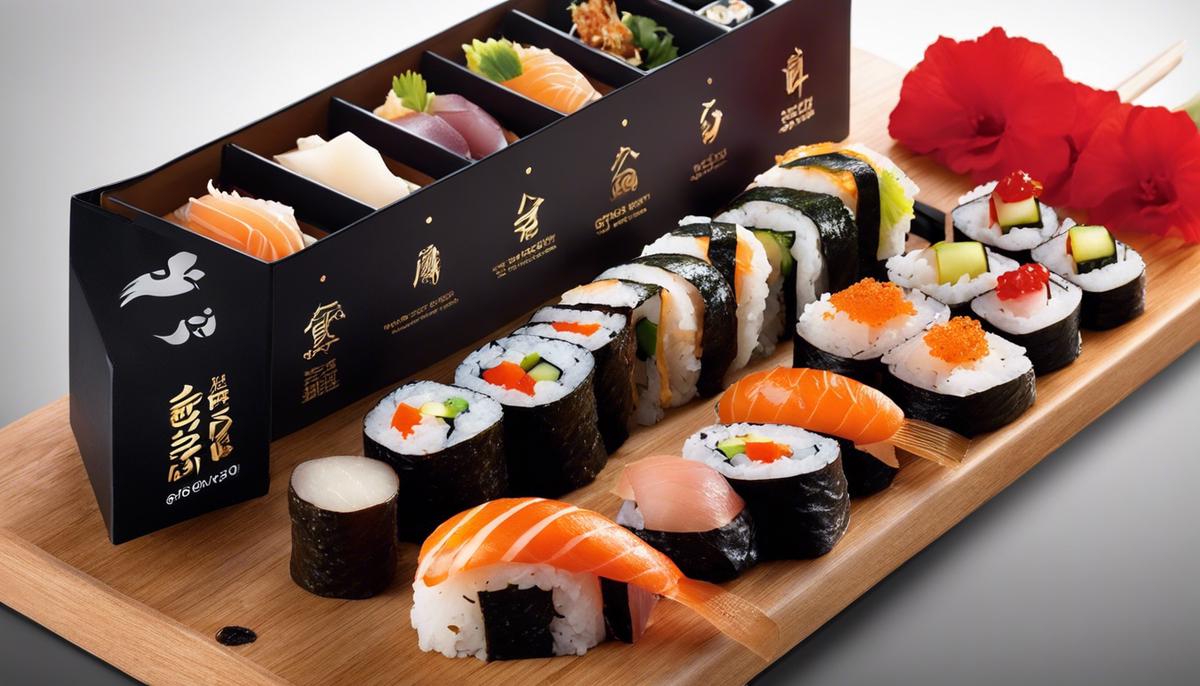
After following the thrilling journey of sushi from its conservative origins to its current global position, we are forced to admire its allure and heritage. Particularly noteworthy is the way sushi embodies the traditional Japanese values of harmony and perfection through its presentation and aesthetics. The growth and development of sushi is also reflected on social media, where it is constantly being reinterpreted and celebrated. By adapting to certain cultural contexts while still maintaining its core, sushi has undoubtedly had a profound impact on gastronomy and will undoubtedly continue to do so in the future.
